Want to know what to do and see in 5 days in Rome on a long weekend? It is no coincidence that it is known globally as the 'Eternal City'. Strolling through the streets of the capital seems as if time has stood still, with its monuments and archaeological sites turning every stroll into a plunge into the past. Our 5-day itineraries in Rome will provide you with all the information you need to better plan your trip. Among the capitals of great historical importance in the world, Rome is one of the most beautiful and complex cities. This page contains useful travel tips and advice if you are visiting the Eternal City for the first time or if you want to return to visit all the historical sites.
What to see in Rome in 5 days: the perfect amount of time to explore the capital at its best.
Every corner of this city, in fact, hides precious attractions, monuments from the distant past, but also museums and curious places that hide stories and legends. In this article, we thought we would tell you what to visit and what to see in Rome in 5 days, including lesser-known attractions, which you can easily visit by purchasing the Visit Rome Pass, the easiest and most immediate way to get discounts and concessions on entrance to museums, exhibitions, places of cultural interest and public transport. Find out more about the best tourist pass in the city and what to see in Rome in 5 days.
Five one-day itineraries created to reach the main attractions on foot and by public transport, ideal if you are in the capital for the first time. One of the things everyone should do in life is visit Rome in 5 days. It is also great to take a walking tour around the city, it is a wonderful mixture of history, art and truth, museums, churches, palaces and vibrant street art, squares, fountains and flights of stairs, and we will do it in 5 days in Rome.
Buy your Visit Rome Pass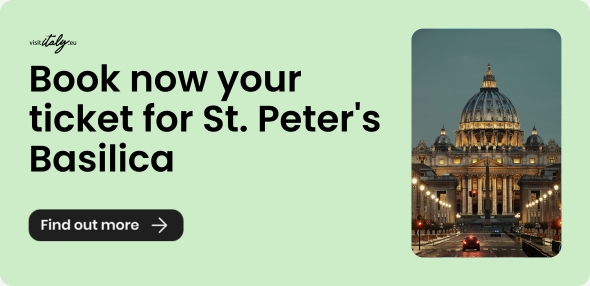
What to see in Rome in 5 days: things not to miss on your long weekend

Cramming an itinerary of what to see in Rome in five days into a list, however well-filled, is no easy task. That is why we thought we would provide you with a place or attraction to see for the three times of the day: morning, afternoon and evening. We, who have always been in love with this extraordinary city, could write lists of things to do and visit that are never-ending! That is why, in the following paragraphs, you will find some attractions that you will surely know and others that are true gems of the city. Discover with us what to see in Rome in 5 days. The city has an illustrious history and attracts Italian and foreign tourists every day for its monuments and points of interest. Spend your long weekend in Rome and discover what to see in 5 days, there are many reasons to go. The city has great food and a unique atmosphere, bewitching and irresistible to visitors. When you walk through the streets of the capital, you can see many archaeological finds. A five-day trip to Rome allows you to fully immerse yourself in its past, when gladiators fought within the walls of the Colosseum, quadrilles competed in the Circus Maximus and philosophers debated democracy in the forum.
Do you think five days in Rome is enough? This is Europe's third largest city by number of tourists with over 16 million visitors a year. There are many things to do and see in Rome in 5 days, but we have tried to create some small itineraries to do in 5 days in Rome for those who are planning to visit the city for the first time or for those who have already been there but have not done and seen much. Therefore, we propose five perfect itineraries for exploring Rome in five days on foot and by public transport, all of which can be combined according to your preferences. Each itinerary generally starts at a metro stop and takes either a few hours or a full day to complete.
Here are Rome's itineraries in five days, have a good walk around the Eternal City.
Day 1. What to see and visit in 5 days in Rome
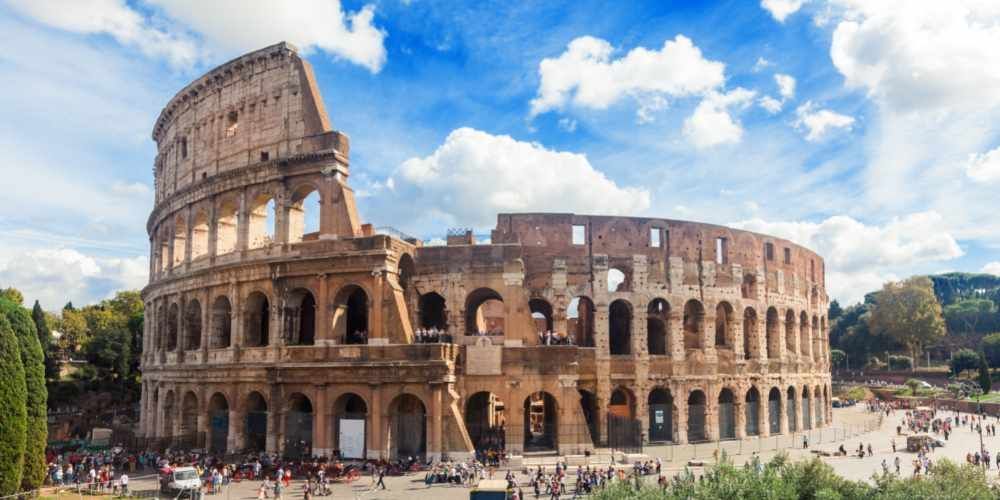
Our five-day itinerary in Rome starts in the city centre, the part that preserves the history of the ancient Romans. In fact, on this very first day we will take you to visit the Colosseum.
In the world, the Colosseum is the city's best-known monument. The monumental area is centrally located in the ancient city and is easily accessible via the Metro B station located nearby. Furthermore, the Colosseum, which includes the Roman Forum and the Palatine, is the largest archaeological park in Europe and one of the most visited in the world. Since 2007, it has been included among the new seven wonders of the world. We recommend that you visit the Colosseum in the morning so that you can see this monument without all the crowds of tourists that are here every day.
In the afternoon we will walk around the Imperial Forum Street, here you will have the chance to see the Roman Forum. The Roman Forum and the Imperial Fora were built to demonstrate the supremacy of Rome, a city that could control the world at the time. To achieve this, there had to be large spaces full of majestic buildings, porticoed squares adorned with exedras and temples rich in statues and decorated with marble, stucco and mosaics. The ideal place to tell the story of Gaius Julius Caesar, the bravest and most powerful man of his time, is the Roman Forum.
In the evening there is nothing more divine than being able to admire the Eternal City from above when the sun is setting over it, in fact we recommend a visit to the Palatine. Located between the Velabro and the Roman Forum, the Palatine is one of the seven hills of Rome and is among the oldest parts of the city. The site is now a large open-air museum that is open all day. Entrance is chargeable and is accessed from Via di San Gregorio. Alternatively, you can climb the Palatine by entering the Roman Forum and then ascending to the right of the Arch of Titus to the Clivo Palatino. The origin of Rome is on the Palatine because, according to legend, Romulus and Remus were raised in a cave by a she-wolf and it was here that Romulus founded the city, whose house is known as 'Casa Romuli'.
● Morning: visit the largest existing amphitheatre
Not only is the Colosseum the symbol of the city. It is also the largest Roman amphitheatre in existence.
Its size, in fact, makes it more imposing than the one in Capua and the one in Milan.
Yet, we know that millions of visitors are not only fascinated by this extraordinary monument because of its size. There is much more enclosed within those centuries-old walls: art, architecture and, above all, an extraordinary history.
● Afternoon: Discover the heart of the ancient capital
How many postcards of Rome feature the Roman Forum? Its ruins, imposing and marvellous, move you to the depths.
Like an ecosystem, this ancient square is surrounded by monuments, temples, churches and palaces. This was indeed the centre of Rome's political, commercial and economic life.
Thanks to the new night lighting, you can walk along the picturesque Via dei Fori at night and be dazzled by the wonder of history.
● Evening: Visit the oldest part of the city
The Palatine Hill itself was the silent witness to the city's origin. A small village of just a few huts which, over the centuries, became so important that it was called 'caput mundi'.
You can walk along this hill and wander through the ruins of the imperial city. In front of you, you will see the ancient residences of the emperors, even that of Augustus, as well as the remains of ancient houses and temples.
After all, this was one of the most sacred places in the city.
Before continuing the overview of the main attractions and the most enchanting and evocative places to visit during your stay in Rome, we propose a very interesting option for lovers of history and archaeology.
You will be able to enjoy priority access to some of the capital's most emblematic monuments, such as the Colosseum, the Roman Forum and the Palatine Hill, avoiding long hours of waiting. Click on the button to find out more.
Colosseum, Roman Forum and Palatine: Guided tour + Fast-track admissionDay 2. What to visit in 5 days in Rome
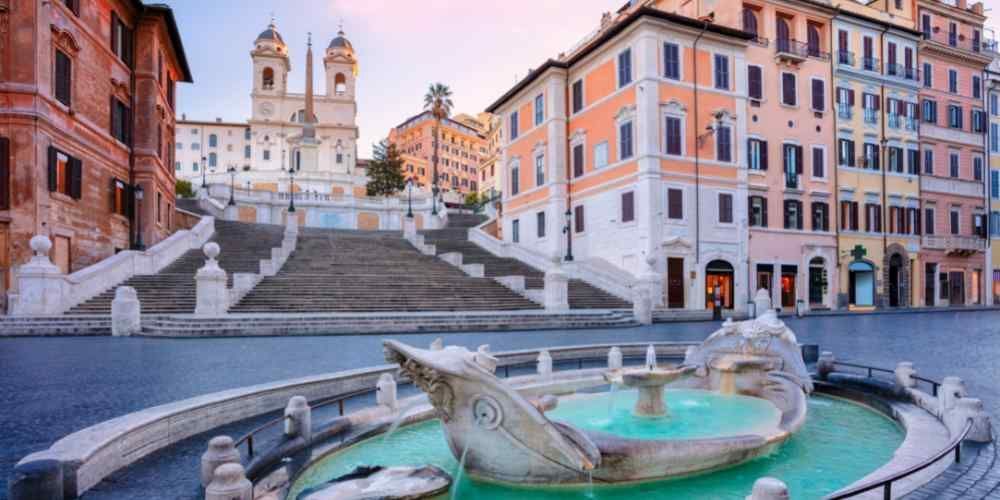
The second day of the 5-day itineraries in Rome is dedicated to Culture, its infinite beauty and many other things!
We spend the morning at the Vatican Museums: they are one of the most important places to visit in Rome in 5 days and are a stone's throw from St Peter's Square. The beauty of the Sistine Chapel and the Raphael Rooms, as well as the works of Leonardo and Giotto, evoke the history of Italy here. What should you watch out for? The traditional entrance queues that can cause inconvenience. It is impossible to have a smooth experience, but there are some ways to avoid stress and make the most of your day. Our tips for a worry-free visit to the Vatican Museums can be found in the button dedicated to them.
In the afternoon, we must visit Villa Borghese Pinciana, now home to the Borghese Gallery, was built to be a museum, a place of culture, a place to contemplate ancient and modern art. You will also find a small library and a place to contemplate nature, with unique animals and plants, as well as samples of fossils and modern technology. Flaminio Ponzio, trusted architect to the Pope and the Cardinal, is responsible for the merits of his architecture.
In the evening, you can't visit Rome in five days without passing by the Piazza di Spagna and taking some nice pictures on the Spanish Steps. Especially during spring, when it is full of flowers. One of the most famous places in the 'eternal city' is there. Apart from the steps, there are other unmissable sights such as the Fountain of the Barcaccia, the Memorial House of the English poets Keats and Shelley, the House Museum of the painter Giorgio De Chirico and the Palace of the Propaganda Fide.
Tickets for Rome: Walking tour of the most famous piazzas and fountains● Morning: Discover the art collection collected by the Popes
5 days are perfect for getting to know Rome.
You'll have time to dedicate to visiting one of the most visited museums in the world, the Vatican Museums.
Inside, you will see Egyptian, Greek, Hellenistic and Roman works of art, as well as masterpieces of more recent art history. Not to mention that, at the end of your visit, you will see the greatest fresco of all time, housed inside the famous Sistine Chapel.
Take the opportunity to admire the magnificent pictorial and sculptural masterpieces preserved in this treasure trove of beauty by taking advantage of the Skip the Line option. Click on the button to find out more.
Vatican Museums and Sistine Chapel Tickets: Guided Tour● Afternoon: See one of the capital's most amazing museums
In the heart of one of Rome's largest parks is the splendid Borghese Gallery.
It is housed in a villa that was built specifically to house the great collection that now occupies it.
You will find immense masterpieces from the past, bearing the signatures of Titian, Canova, but also Bernini and Caravaggio.
This is undoubtedly one of the must-visits in Rome in five days.
Would you like to explore the splendid art collection of the Galleria Borghese by joining a guided tour, which will take you on an exciting journey through the works, and taking advantage of the Skip the Line option?
Click on the button to find out more.
Borghese Gallery Tickets: Skip the Line Ticket + Guided Tour● Evening: Walk down Rome's most famous flight of steps
Anyone who has visited Rome has longed to walk the monumental Spanish Steps.
Made famous by Hollywood films such as Vacanze Romane, it is one of Rome's best-loved sights.
During the summer, the steps are a great place to enjoy the warm atmosphere of Rome, sit on the steps and watch the passers-by, while during the winter months it is still an enchanting place to stroll and admire the city from above.
If you dream of spending a fabulous stay near this iconic spot in the capital, you will find high quality accommodation facilities within easy reach. Click on the button to find out more.
Find out how to bookDay 3. Itinerary Rome in 5 days
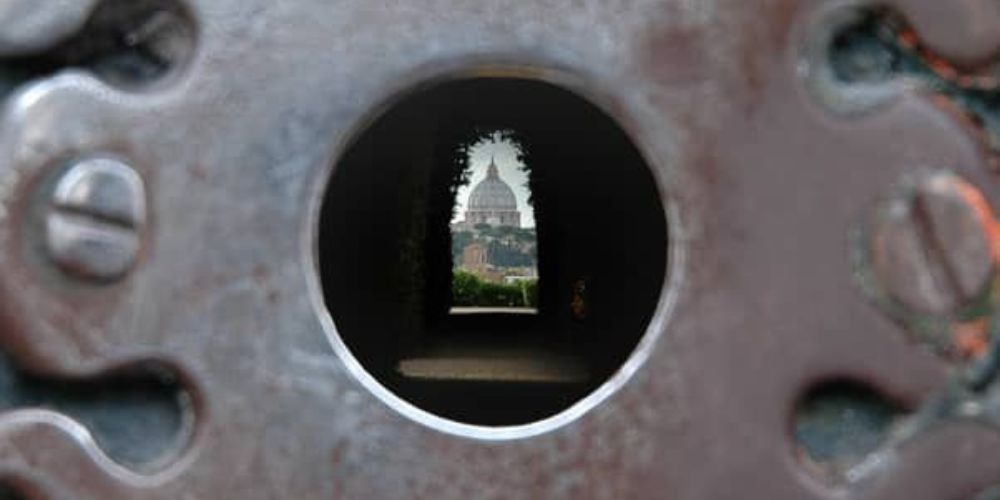
This 5-day itinerary in Rome is dedicated to the sights of this beautiful city as seen from vantage points.
We begin the morning of the third day of our 5-day Rome itineraries by peeping through a keyhole. The 'keyhole' is a peephole in the main door of the Magistral Villa overlooking the evergreen garden of the Priory of the Knights of Malta on the Aventine Hill. One can see a glimpse of St Peter's Basilica from above, with an impressive view of the dome surrounded by the trees of the 18th-century garden.
In the afternoon, we recommend you go to the Trastevere area to a fantastic terrace where you can admire the city. The Janiculum is located in the Trastevere district and there are several ways to get there. Piazza Sant'Onofrio, Via G. Garibaldi, Largo di Porta San Pancrazio and Piazza della Rovere are the main ones. How can you get to the Janiculum Hill? The tram is the fastest way to reach the terrace; afterwards, you can take the bus. You can get off in front of the Ministry of Education by taking the tram to Largo Argentina. You can take the bus that takes you directly to the Janiculum from here. This belvedere offers a breathtaking view of the historic centre of the capital if you love vantage points. At this tourist attraction you can see the busts of Garibaldi's soldiers and watch the famous firing of the noon cannon. When the sky is clear, even the Regina Coeli prison can be seen in the distance. The 88-metre terrace on the famous Roman hill overlooks the Tiber River. It is ideal for a sunset aperitif. We also suggest a visit to the Botanical Garden, which was the vital centre of the Vatican in the 13th century, is easily accessible from the Janiculum Terrace.
In the evening you will reach the island in the middle of the Tiber River. Surely you are familiar with the Tiber Island, which lies in the bed of the Tiber and is connected to the 'mainland' by two bridges. However, you may not be aware of its history, its legends and its beauty, which everyone should appreciate at least once in their life.
Often called simply 'Island', it owes its name to the river that has accommodated it for many centuries: in fact, the ancient word 'tiber' refers to the river Tiber. It is the only urban island on the Tiber so far.
● Morning: The keyhole
At the highest part of the Aventine Hill, between the Orange Garden and the entrance to the Villa of the Priory of Malta, is the famous 'keyhole', from which St Peter's can be seen. The view can even cross three states: Italy, then the Order of Malta and, finally, the Vatican State.
The particular view from the keyhole is not accidental, in fact it is a fake (there is no key to open it, it is just an idea to admire the dome).
However, it is one of the most curious things you will have the opportunity to visit in Rome in 5 days: you will find it in Piazza dei Cavalieri di Malta.
Would you like to admire the wonders of Rome from a fascinating and evocative perspective? We suggest you spend a magical stay on the Aventine.
Click on the button to find out more.
Find out how to book● Afternoon: Visit the Risorgimento Memorial with a splendid panorama
The Janiculum is a Roman hill located near Trastevere. In 1849 the battle between Garibaldi and the French army for the defence of the Roman Republic took place here.
Today it is a public park and memorial of the Risorgimento. From its breathtaking viewpoint one can clearly see the Pantheon, the Synagogue, the Altare della Patria, the domes of numerous churches and Villa Borghese.
The most interesting sights on the Janiculum Hill are the Acqua Paola Fountain, the Church of San Pietro in Montorio (with Bramante's small temple in its courtyard) and the Garibaldi monument.
Find out how to book● Evening: Discover the small sacred island
The Tiber Island is also called the Island of the Two Bridges, since it is connected to the mainland by two bridges. It is most famous for the presence of the Fatebenefratelli Hospital, but also for some legends about its origin.
According to one of these, the island was born in 509 when the last king of Rome, Tarquinius Superbus, was ousted and the people threw their grain store into the Tiber. It was so large that it even formed an island!
Find out how to bookDay 4. Long weekend in Rome what to do in 5 days
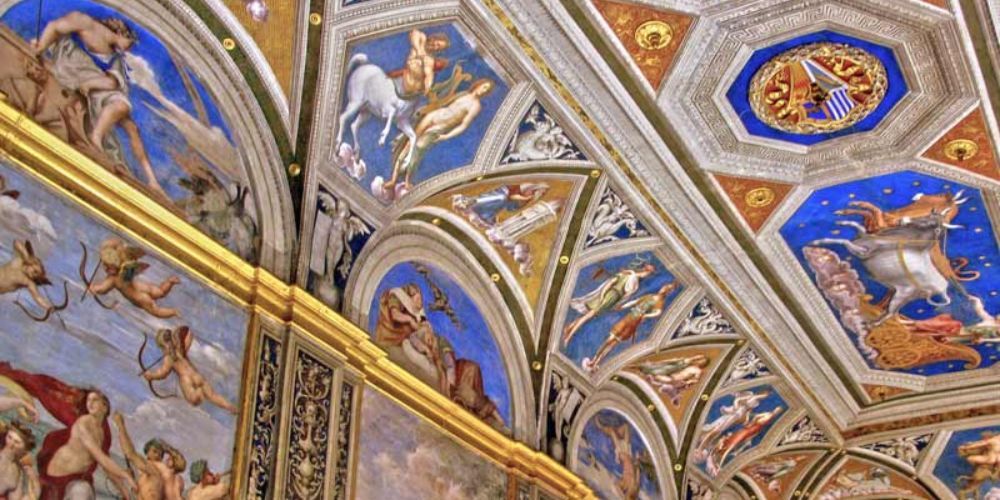
We are now on the penultimate day of your five-day long weekend in Rome and today we will take you on a tour to discover stylish neighbourhoods, a park that started out as a fortress and end the day in a Renaissance villa.
In the morning we head to the Coppedè Quarter, which is located not far from the centre of Rome and is characterised by Piazza Mincio and the Fountain of Frogs.
Architect Gino Coppedè designed the ornamental Baroque-style fountain in the 1920s. Although small, it is a complex creation. A four-lobed platform is placed on a circular step onto which a round external basin is grafted. Two men support the four shell-shaped basins at the sides, which are filled by a jet of water that comes out of the mouths of some frogs, which give the fountain its name. The frogs are still present on the small basin upstream of the fountain, reminiscent of the Fountain of the Turtles in Piazza Mattei, in the Jewish ghetto. In the Fountain of Frogs, the Beatles are said to have bathed after one of their concerts in the nearby Piper disco in 1965. Palazzo Ragno and the Villini delle Fate, eccentric mixed-material structures combining Baroque, Medieval, Renaissance and Art Nouveau styles, overlook Piazza Mincio.
In the afternoon you will have to reach the Aventine Hill. One of the most fascinating places in Rome is the Savello Park, or Giardino degli Aranci. It is on the Aventine Hill and overlooks the Tiber River. It was built on the site of the former fortress of the Savelli family, from which it takes its name. The present garden, designed by architect Raffaele De Vico in 1932, is surrounded by the old walls of the fortress. The decision to return to the public the land that the Dominican fathers had used as a vegetable garden led to the start of work. In fact, St Dominic decided to found his convent here in the 13th century. St Dominic is associated with orange trees. According to tradition, the saint used to preach near an orange tree, which is now preserved in the cloister of the Church of Santa Sabina. From the park there is an excellent view of the city, which is very beautiful at sunset.
In the evening we end the day by visiting Villa Farnesina or Chigi. The Villa Farnesina in Rome is one of the most noble and harmonious works of the Italian Renaissance. It was built in the early 16th century by a wealthy Sienese banker and patron named Agostino Chigi. The Loggia of Cupid and Psyche is known for its numerous pictorial cycles painted by Raphael, Sebastiano del Piombo, Giovanni Antonio Bazzi known as Sodoma and Baldassarre Peruzzi. The vault fresco was painted by Raphael and his workshop and presents episodes from Apuleius' famous story. A work dedicated to the Villa Farnesina in Rome is part of the Mirabilia Italiae series, which is unique in the world and presents tours of Italy's most beautiful monuments.
● Morning: Explore Piazza Mincio and its iconic district
Piazza Mincio is surrounded by the Art Nouveau architecture of the Coppedè Quarter.
The latter takes its name from the architect who designed it between 1915 and 1927, in Art Nouveau style with Gothic, Baroque and medieval infiltrations.
At the entrance to the district, consisting of 26 buildings and 17 small villas, there is an arch with a large wrought-iron chandelier.
Piazza Mincio defines the space with the Fountain of Frogs: then there are the Palazzina del Ragno and the Villino delle Fate.
A visit you absolutely cannot miss if you are looking for some ideas on what to see in Rome in 5 days!
● Afternoon: Stroll through the beautiful Savello Park, with one of the most beautiful views of the city
The Savello Park, better known as the Orange Garden, is located in the Ripa district. The trees that give it its name were planted in memory of St Dominic, who founded his convent here.
The park was designed in 1932 by architect Raffaele De Vico, who enhanced the space enclosed within the ancient walls. In the enclosure wall, on the side opposite the side wall and the apse of Santa Sabina, traces of the towers and drawbridge of the castle are clearly recognisable. The view from the belvedere goes from the Tiber to St Peter's Basilica.
● Evening: Observe the villa symbol of Renaissance architecture
The Villa Farnesina or Chigi, located on Via della Lungara in the Trastevere district, is the symbol par excellence of Renaissance art and Raphael.
It was the home of the Sienese banker Agostino Chigi, called Palazzo del Giardino, a paradise with medicinal and exotic plants and statues in classical style.
Inside, there are two loggias: the Loggia of Galatea or Loggia d'Inverno, with frescoes of the nymph and Polyphemus, Chigi's horoscope; the Loggia of Cupid and Psyche (by Raphael and his workshop) recounts with magnificence of festoons, decorations and figures, the episodes of Apuleius' fable.
If you wish to treat yourself to a fairy-tale weekend, there are some excellent facilities dedicated to hospitality in the vicinity of this masterpiece of art history.
Find out how to bookDay 5. Five-day itinerary in Rome what to visit, do and see

Our last day of the itineraries of what to visit in Rome in 5 days will be spent among mysterious places, places with optical illusions, and we will end by getting to know a modern work of art that has become a symbolic monument in its neighbourhood.
In the morning we recommend a visit to one of the most fascinating and mysterious places in the capital. Vicolo Scellerato, has many unique stories that make it one of the best places to visit if you want to get off the 'usual' Rome circuit and discover its darker and more unusual side. Vicolo Scellerato, which is more commonly known as the staircase leading to the church of San Pietro in Vincoli, is located in the beautiful and refined Monti district. It is a place of murder and family intrigue worthy of the best American crime series. Vicolo Scellerato, a.k.a. vicus sceleratus, is just a staircase with a sinister reputation from the past, but today it is much frequented and visited.
In the afternoon we get to know another street in the city. Have you ever heard of the Via Piccolomini and the optical illusion of the Dome that you can see from here? If Rome is marvellous in every way, there are amazing plays of perspective that leave everyone, young and old, open-mouthed.
In the evening we have to end our last five-day itinerary in Rome right here: at the Palace of Italian Civilisation in EUR, also called the 'Square Colosseum' or the 'Palace of Civilisation of Labour'. It is certainly one of the most talked-about and well-known monuments of modern Rome. The Palazzo has always been a mysterious and often unused object due to its difficult functional identity, but its perfect and unmistakable figure has turned it into a symbolic monument of a neighbourhood and perhaps of a particular historical period.
● Morning: Walk through the Vicus Sceleratus, one of the most evocative places
If you want to know what to see in Rome in 5 days, come and visit the Vicus Sceleratus.
It is also called the Scalinata or Salita dei Borgia, and is located in a quiet spot on the Esquiline Hill. In fact, look down the steps at what are considered to be the ancient residences of the Borgias.
Walking up the alley and past the arch of the staircase, one arrives at the Basilica di San Pietro in Vincoli, where Michelangelo's majestic Moses is kept.
Find out how to book● Afternoon: Via Piccolomini and the optical illusion
Via Niccolò Piccolomini (Aurelio district) is a place of magic: the closer you get to the dome of St Peter's, the more, to your eyes, it seems distant and small and vice versa.
This mystery can be experienced either on foot or by means of transport.
No doubt it is one of the streets to visit if you are wondering what to see in Rome in 5 days!
Find out how to book● Evening: don't miss this EUR building
In the EUR district, the Palazzo della Civiltà Italiana, better known as the Square Coliseum, is the symbol of 20th century architecture in the capital. It reproduces the sequence of arches as many as two hundred and sixteen times in its four elevations.
The palace was designed and built for the 1942 International Exhibition in Rome, but work was interrupted, as was the event itself, due to the outbreak of war. However, the palace was completed after the war.
Under the arches are twenty-eight marble statues depicting arts and human activities celebrating Italian genius. At the top is the inscription:
'A people of poets, artists, heroes, saints, thinkers, scientists, navigators and transmigrators'.
Today it houses the headquarters of Maison Fendi.
What other attractions to visit in Rome in 5 days?
About the author
Written on 23/04/2024


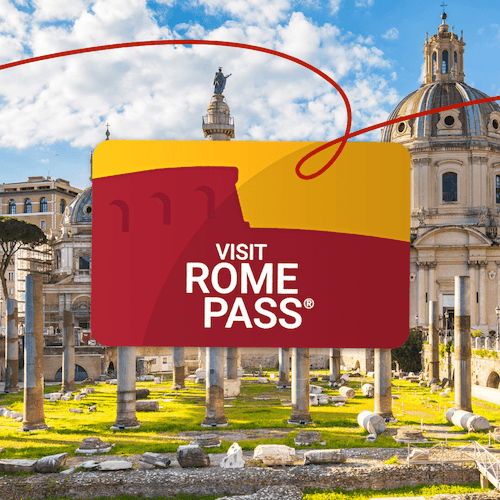
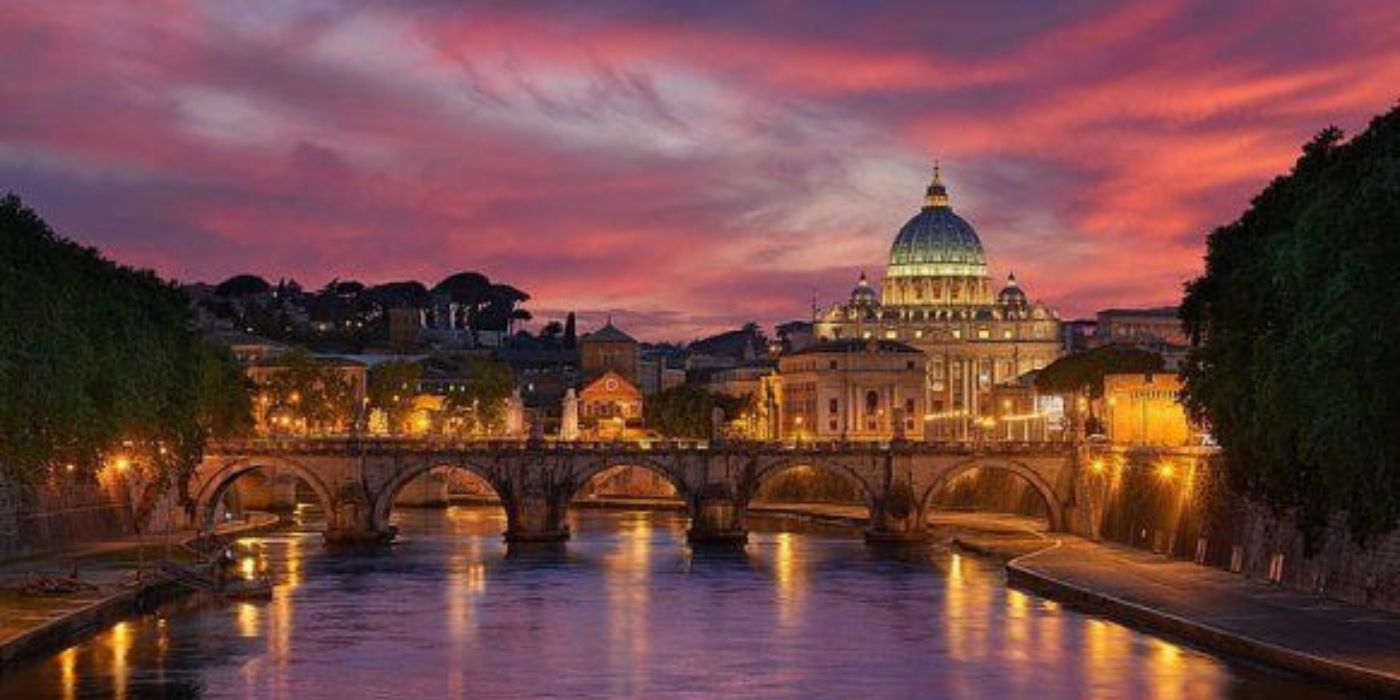
Eleonora Monaco
What to see in Rome in 5 days? Discover the most interesting sights and places to visit in the capital during your long weekend!